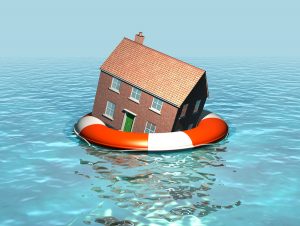Real estate website provides answers

Credit: philhol
The popular real estate website Realtor.com has done a great public service by recently adding flood risk to its listing of homes across the nation – both those currently for sale and those off the market. As those of us who work in insurance and disaster management know, too many homeowners aren’t aware of their property’s flood risk, with tragic consequences.
The listings contain both the FEMA flood zone designation (relied on for federally-backed mortgages) as well as the new Flood Factor, a free property-specific web application launched this summer by the nonprofit First Street Foundation. A property’s Flood Factor is a score between 1 and 10 that represents the cumulative risk of flooding over the next 30 years. A factor of 1/10, for example, represents homes with the lowest chance of flooding.
As we reported last month, First Street’s model shows 14.6 million properties (10.3%) in the lower 48 states & D.C. are at risk from a 1-in-100-year flood. That compares with the 8.7 million properties listed on the FEMA/NFIP’s current flood maps. Florida’s risk is even greater – 20.5% of our properties are at substantial risk today, equating to 113,965 Florida properties that should be categorized today as being in Special Flood Hazard Areas, but are not.
“Historically, determining a property’s flood risk was an onerous process – in some cases, potential buyers would have no idea a property was in a flood zone until it was flagged by the mortgage company prior to closing, or in some cases not at all,” said Leslie Jordan, senior vice president of product for realtor.com in a release. “By surfacing this information upfront, consumers can avoid surprises and have all the information they need to make informed decisions.”
In other flood news, the Florida Department of Economic Opportunity is making available an additional $27 million to local governments in communities impacted by Hurricane Michael to purchase repetitive loss and other high flood risk properties for demolition. It’s part of the Rebuild Florida Voluntary Home Buyout Program. The money follows another $44 million in CDBG-DR grants we reported last December to communities across Florida, which included $25 million for properties in the Florida Keys.
LMA Newsletter of 8-31-20

